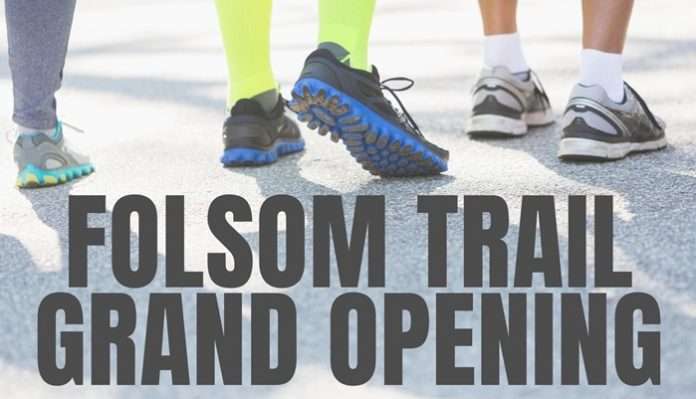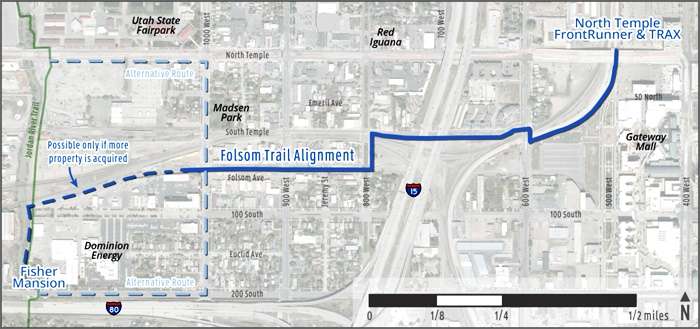
SALT LAKE CITY, Utah, June 3, 2022 (Gephardt Daily) — Utah Transit Authority, Salt Lake City, and the Federal Transit Administration will host a grand opening on Tuesday to celebrate the completion of the first phase of the Folsom Trail.
The one-mile, paved, shared-use pathway for walking and bicycling connects Salt Lake City’s westside and west downtown neighborhoods with UTA’s North Temple Station and transit across the Wasatch Front, said a Friday news release from Carl Arky, UTA Media Relations Specialist.

The ribbon-cutting celebration is set for 10 a.m. Tuesday at 1000 W. Folsom Avenue (40 South) in Salt Lake City.
Speakers will be Carlton Christensen, chairman of the UTA Board of Trustees; Salt Lake City Mayor Erin Mendenhall; and Jorge Fierro, business owner and community advocate.
“The Folsom Trail opens options to residents and visitors for active transportation, east-west mobility, neighborhood vitality, and economic development,” the news release says.
“Future improvements to the trail corridor may include bringing portions of City Creek up to the surface in selected areas within the corridor, landscaping, and an extension to the Fisher Mansion and the Jordan River.”
The Salt Lake City website has additional information about the first phase of the trail, including, “This phase includes the concrete trail for walking and bicycling, 26 bollard and 10 pedestrian pole lights, trail delineation, street crossing improvements, and some site furniture (benches, trash cans).Other than seeding and restoring landscaping where it exists, this phase will not include landscaping (plants, trees, crushed stone) or irrigation. Those improvements will come next.”
Funding for the Folsom Trail came from part of a larger $20 million grant awarded to UTA from the U.S. Department of Transportation BUILD Transportation Discretionary Grant program, which funds projects that have a “significant local or regional impact facilitating access to transit.” The program was previously known as the Transportation Investment Generating Economic Recovery program, or TIGER.
Additional funds for the trail were contributed by Salt Lake City via parks impact fees, transportation sales tax, and its Redevelopment Agency.





